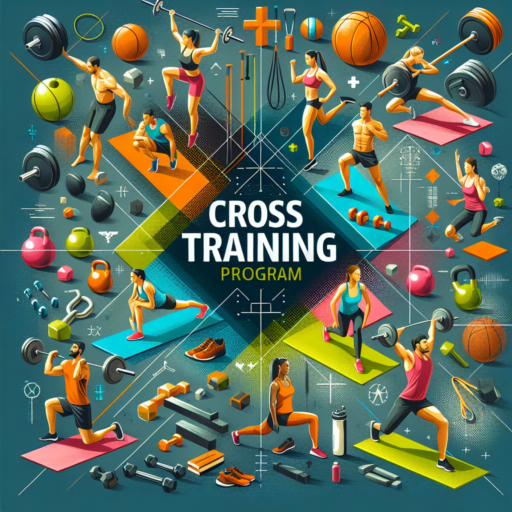What is Elliptical Cross Training for Runners?
Elliptical cross training offers a versatile, low-impact alternative for runners seeking to enhance their fitness routine without the strenuous impact on their joints compared to traditional running. This training method utilizes the elliptical machine, a staple in gyms and homes, to mimic the natural motion of running. However, it does so in a fluid, gliding manner that considerably reduces stress on the knees, hips, and back.
For runners, incorporating elliptical cross training into their regimen is a strategic move to not only prevent injuries by providing the body a break from the constant pounding associated with running on hard surfaces but also to improve overall aerobic capacity. This is because elliptical training can help maintain and even boost cardiovascular fitness, thanks to its ability to elevate the heart rate similar to running, while also engaging a variety of muscle groups including the quads, hamstrings, glutes, and even the upper body when using the handlebars.
Moreover, elliptical cross training for runners serves as an efficient recovery tool. On days when muscles are sore or when runners are dealing with minor injuries that make running painful, the elliptical machine offers an excellent way to stay active and continue training. Its low-impact nature ensures that recovery is not hampered, allowing runners to maintain fitness levels without risking further injury.
Benefits of Elliptical Cross Training for Running Performance
Integrating elliptical cross training into a runner’s workout regimen can lead to substantial improvements in performance, offering a multifaceted approach to athletic enhancement. By utilizing the elliptical, athletes can experience a myriad of benefits that contribute significantly to their running performance. This form of cross training not only aids in injury prevention but also in the development of muscular strength and cardiovascular endurance, positioning it as an ideal complement to traditional running routines.
One of the key advantages of elliptical cross training is the reduction of impact on the joints. Runners, especially those covering long distances, frequently encounter stress injuries to joints due to the repetitive impact of their feet against the ground. The elliptical machine provides a low-impact alternative that mimics running motions, allowing muscles to engage in a similar manner without the harsh impact. This can lead to a decreased risk of common running injuries, such as shin splints and runner’s knee, thereby enabling more consistent training without forced interruptions.
Furthermore, elliptical cross training enhances cardiovascular endurance and muscular strength, key components for any runner aiming to improve performance. The ability to adjust resistance levels on an elliptical machine makes it an effective tool for building strength in the legs and lower body muscles—areas crucial for running efficiency and speed. Simultaneously, the aerobic nature of elliptical workouts helps in boosting lung capacity and stamina, allowing runners to sustain longer distances at higher intensities. Regularly including elliptical sessions in a training plan can lead to significant gains in overall running performance.
How to Incorporate Elliptical Workouts into Your Running Routine
Integrating elliptical training into your existing running plan provides a multifaceted approach to fitness that complements endurance, strength, and reduces the likelihood of injury. This unique blend of workouts can enrich your routine, offering an effective cross-training method that boosts overall performance without the high-impact stress of continuous running.
Begin with Balanced Sessions
Start by incorporating elliptical workouts into your running regimen slowly, perhaps with one to two sessions per week. This allows your body to adjust to the new form of exercise without overwhelming it. On the elliptical, aim for a 1:1 ratio of hard to easy effort, similar to how you might approach interval training runs. This method not only conserves the essence of running workouts but also reduces the risk of overuse injuries.
Focus on Form and Resistance
On the elliptical, maintaining a proper form is crucial. Ensure your posture is upright, with your core engaged and your shoulders back. Adjust the resistance and incline settings to simulate outdoor running conditions, challenging your body in new ways. This adjustment in training intensity can stimulate muscle groups used in running, reinforcing strength and endurance.
Strategically integrating elliptical training can effectively balance your running routine, offering rest to weary joints while continuing to build on the pivotal elements of running fitness.
Elliptical Vs. Running: Understanding the Differences
When it comes to cardio exercises, both the elliptical and running stand out as popular choices for people looking to improve their fitness. However, despite their shared goal of boosting cardiovascular health, they differ significantly in key areas.
Impact on the Body
One of the most notable differences between using an elliptical and running is the impact they have on the body. Running is a high-impact exercise that can place significant stress on the joints, especially the knees, hips, and ankles. In contrast, the elliptical provides a low-impact workout, making it a gentler option for individuals with joint concerns or those recovering from injuries. This feature of the elliptical machine allows users to engage in longer cardio sessions without the added stress on their bodies.
Caloric Burn
Another area where the elliptical and running diverge is in their potential for caloric burn. While running is typically associated with a higher calorie burn due to the greater level of physical exertion it requires, the elliptical can also offer a substantial calorie burn. This is especially true when users take advantage of the resistance and incline settings on an elliptical machine. Adjusting these settings can lead to a more intense workout, closely matching or even surpassing the caloric burn one might achieve through running.
Ultimately, the choice between elliptical and running hinges on individual preferences, fitness goals, and physical condition. By understanding the distinct impact and caloric burn differences between these cardio exercises, individuals can make a more informed decision about which is best suited to their personal health journey.
Key Elliptical Training Tips for Runners
Integrating elliptical training into a runner’s workout regimen can offer a multitude of benefits, including reduced impact on joints and diversified cardio workouts. However, to make the most out of your elliptical sessions, certain practices should be embraced.
Optimize Your Form
Maintaining the correct form on the elliptical is paramount for runners looking to enhance their performance. Keep your back straight, shoulders back, and head up, ensuring that your core is engaged throughout the session. This not only helps in mimicking the natural running posture but also in preventing injuries. A focused effort on pedaling smoothly can replicate the natural gait of running, further enhancing muscle endurance and strength.
Vary Your Workout Intensity
To break the monotony and simulate different running environments, varying the intensity of your elliptical workouts is recommended. By adjusting the resistance and incline, you can mimic hill workouts or interval training, which are essential for building running power and stamina. Initiating this diversity in your training will not only keep your workouts engaging but also ensure that different muscle groups are targeted, boosting overall performance.
Incorporate Cross-Training Elements
Elliptical training, when combined with other forms of cross-training, can substantially improve a runner’s endurance and speed. Incorporating elements like strength training or flexibility exercises into your routine will support muscle recovery and reduce the risk of injuries. For runners, this balanced approach to training ensures that both the anaerobic and aerobic systems are developed harmoniously, paving the way for improved running efficiency.
No se han encontrado productos.
Top Elliptical Exercises for Enhancing Running Skills
Improving your running skills requires a comprehensive approach, and incorporating elliptical exercises is a fantastic way to add variety to your training while targeting key components of running efficiency and strength. Elliptical trainers offer a low-impact alternative to traditional running, making them an excellent option for runners looking to increase their mileage without additional stress on their joints. Below, find effective exercises that can be easily integrated into your routine to help elevate your running performance.
Incline Challenges
Utilizing the incline feature on an elliptical machine can significantly enhance your leg strength and stamina, which are vital for runners. Increasing the incline mimics hill running, thereby improving your uphill running capabilities without the high impact. Start with a moderate incline and gradually increase the steepness to challenge your muscles, ensuring you maintain proper form throughout the exercise. Incorporating incline intervals into your workouts can effectively build the leg muscles critical for powerful running strides.
Cross-Training Intervals
Integrating cross-training intervals into your elliptical workouts is a strategic approach to boost your cardiovascular health and endurance. By alternating between high intensity and recovery periods, you mimic the natural variations in speed and effort experienced during a run. This kind of interval training not only improves your aerobic capacity but also teaches your body to efficiently recover, preparing you for the demands of longer runs. Equip yourself with a focus on managing your pace and resistance levels to closely simulate running scenarios.
The elliptical machine, with its versatile features, presents a multitude of opportunities to refine and enhance your running skills. By focusing on incline challenges and cross-training intervals, you engage in a well-rounded exercise regimen that targets your running muscles, improves your aerobic fitness, and minimizes the risk of injury. The key is to maintain consistency and progressively increase your workout’s intensity, ensuring that every session on the elliptical translates into significant improvements in your running abilities.
Combating Common Running Injuries with Elliptical Cross Training
Runners often face the challenge of overcoming injuries caused by the high-impact nature of their sport. From shin splints to runner’s knee, these common afflictions can sideline even the most dedicated athletes. However, incorporating elliptical cross training into a regular fitness regimen offers a promising solution. Unlike running, which can exacerbate injuries due to repetitive impact, elliptical machines provide a low-impact alternative that mimics the natural motion of running without the harsh stress on joints and muscles.
Elliptical cross training not only aids in the recovery of existing running injuries by allowing the body to heal but also serves as a proactive measure to prevent future issues. The key lies in the elliptical’s ability to offer cardiovascular benefits similar to running while reducing strain. For instance, the adjustable resistance and incline features of most ellipticals make it possible to tailor workouts precisely, targeting different muscle groups without overburdening the knees, ankles, and other vulnerable areas.
Furthermore, athletes can incorporate varied routines on the elliptical to enhance their overall fitness level and resilience, making them less prone to injuries. Activities such as interval training, backward pedaling, and using the handlebars for upper body work not only diversify the training session but also improve balance and strengthen the core. These improvements can translate into better running form, lower risks of injury, and even enhanced performance.
Maximizing Your Cardio Workout: Elliptical Training Strategies for Runners
Integrating elliptical training into a runner’s routine can unlock a host of benefits, ranging from improved cardiovascular endurance to reduced impact-related injuries. This approach to cross-training not only diversifies an athlete’s exercise regimen but also enhances overall running performance. Let’s delve into effective elliptical training strategies designed specifically for runners seeking to maximize their cardio workouts.
Customize Your Elliptical Settings to Mimic Running Conditions
To reap the most benefits from elliptical exercises, runners should adjust the machine’s settings to closely simulate actual running conditions. This involves increasing the incline to mimic outdoor terrains, adjusting the resistance to match the intensity of a typical run, and maintaining a stride rate that mirrors their running cadence. By tweaking these settings, runners can create a more targeted and effective workout that directly translates to improved running capabilities.
Incorporate Interval Training
Interval training on the elliptical can significantly boost a runner’s cardiovascular fitness and endurance. Alternating between high-intensity sprints and low-intensity recovery periods not only increases the heart rate more effectively but also stimulates fat burning and muscle endurance. This strategy is particularly beneficial for runners looking to enhance their speed and stamina during races.
Effective elliptical training strategies for runners involve more than just stepping onto the machine; it’s about carefully customizing the workout to mirror the unique demands of running. By focusing on simulating running conditions and incorporating interval training, runners can significantly benefit from the low-impact yet high-efficient workouts provided by elliptical training. These targeted adjustments ensure that the time spent on the elliptical directly contributes to improving running performance, making it a valuable tool in any runner’s training arsenal.
Success Stories: How Runners Improved Through Elliptical Cross Training
Many runners have turned to elliptical cross training as a method to enhance their running prowess, seeking improvement in endurance, strength, and overall performance. This approach has not only helped in breaking the monotony of regular running routines but also in achieving remarkable milestones in their running journey. The stories of success are plentiful, illustrating the transformative impact that elliptical training can bring to a runner’s regimen.
Boosting Endurance Without the Impact
The low-impact nature of the elliptical trainer stands out as a significant advantage for runners. It mimics the motion of running without the harsh impact on joints, allowing for longer training sessions that build endurance while minimizing the risk of injury. Numerous athletes report feeling a substantial increase in their ability to sustain longer runs, attributing this endurance boost to the incorporation of elliptical sessions into their training programs.
Enhancing Strength and Running Efficiency
Elliptical cross training goes beyond just mimicking the movement of running; it also involves multiple muscle groups, promoting balanced strength development. Runners have noticed improvements not only in their leg muscles but also in their core and arm strength, leading to better running efficiency and form. This comprehensive strengthening effect aids in faster recovery times and enhances performance during races and long-distance runs.
Frequently Asked Questions About Elliptical Cross Training for Runners
Many runners often wonder how to incorporate elliptical cross training into their regimen to maximize benefits and reduce the risk of injury. This method of training can serve as a crucial component in a runner’s exercise routine by providing a low-impact alternative to traditional running, while still maintaining cardiovascular fitness and endurance. Below, we delve into some of the most common inquiries regarding elliptical cross training for runners.
How does elliptical cross training benefit runners?
Elliptical cross training offers a multitude of advantages for runners looking to enhance their performance and safeguard against injuries. Its low-impact nature is particularly beneficial as it reduces stress on the joints, making it an ideal option for recovery days or for runners experiencing joint pain. Additionally, the elliptical can help improve aerobic capacity and endurance without the additional wear and tear that running can cause. This form of cross training allows runners to engage different muscle groups, helping to correct muscle imbalances and improve overall strength.
Can elliptical training truly replace running?
While elliptical training is an excellent complement to a runner’s training schedule, it should not be viewed as a complete substitute for running. The specificity of training principle suggests that to become better at running, one must primarily train by running. However, elliptical machines can mimic the running motion closely and serve as a valuable tool for maintaining cardiovascular fitness, especially when running is not feasible due to injury or weather conditions. Incorporating elliptical sessions can help maintain endurance and fitness levels without the same level of impact on the body.




